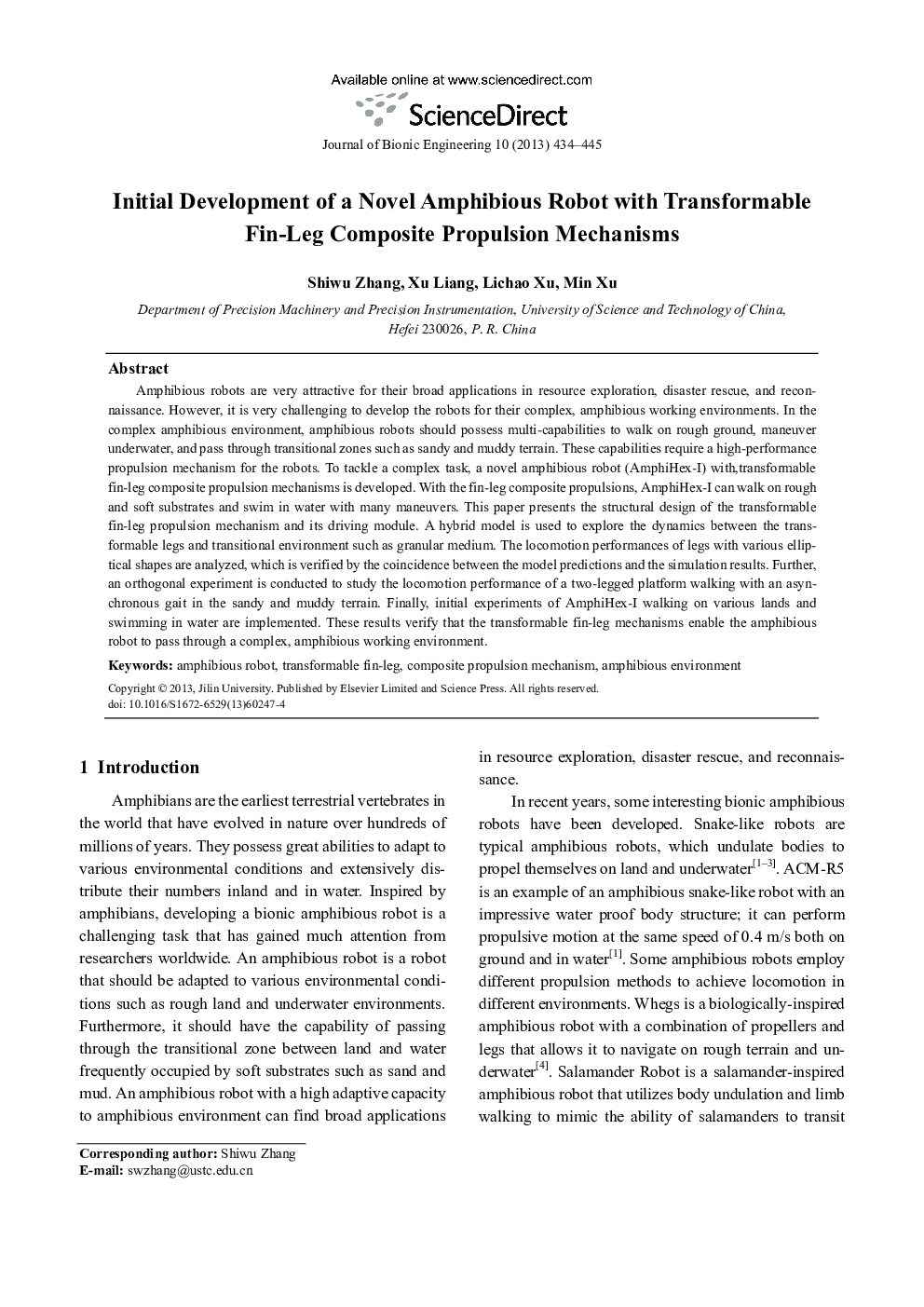| Article ID | Journal | Published Year | Pages | File Type |
|---|---|---|---|---|
| 826626 | Journal of Bionic Engineering | 2013 | 12 Pages |
Amphibious robots are very attractive for their broad applications in resource exploration, disaster rescue, and reconnaissance. However, it is very challenging to develop the robots for their complex, amphibious working environments. In the complex amphibious environment, amphibious robots should possess multi-capabilities to walk on rough ground, maneuver underwater, and pass through transitional zones such as sandy and muddy terrain. These capabilities require a high-performance propulsion mechanism for the robots. To tackle a complex task, a novel amphibious robot (AmphiHex-I) with, transformable fin-leg composite propulsion mechanisms is developed. With the fin-leg composite propulsions, AmphiHex-I can walk on rough and soft substrates and swim in water with many maneuvers. This paper presents the structural design of the transformable fin-leg propulsion mechanism and its driving module. A hybrid model is used to explore the dynamics between the transformable legs and transitional environment such as granular medium. The locomotion performances of legs with various elliptical shapes are analyzed, which is verified by the coincidence between the model predictions and the simulation results. Further, an orthogonal experiment is conducted to study the locomotion performance of a two-legged platform walking with an asynchronous gait in the sandy and muddy terrain. Finally, initial experiments of AmphiHex-I walking on various lands and swimming in water are implemented. These results verify that the transformable fin-leg mechanisms enable the amphibious robot to pass through a complex, amphibious working environment.
